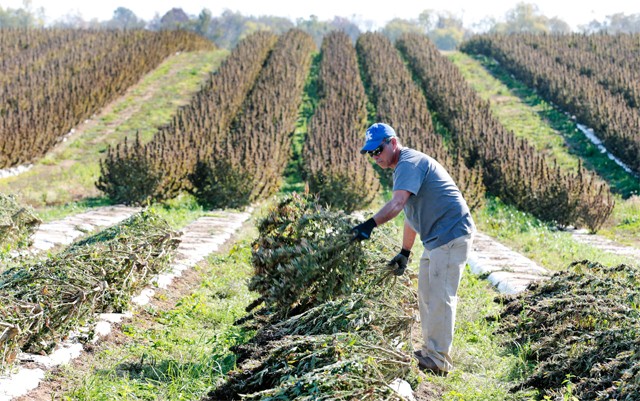Source: marijuanatimes.org

Everyone has heard about the serious problem with drinking water in Flint, Michigan. While St. Marys, Ohio is not quite as bad, they also have a similar problem. Runoffs from fertilizer and manure have plagued the once beautiful Grand Lake. While it sits dormant from ski boats and fishermen, this lake is still being used as a source for public drinking water. Although the contamination surrounding these 2 communities is entirely different, they point to an outbreak that could affect every state in the union unless drastic steps are taken.
Known as phytoremediation, hemp has the ability to drain contaminates from soil, in addition to removing cadmium, chromium, lead, copper and nickel. Bacteria, fungi, parasites and viruses are often transferred by vegetables grown in contaminated soil, as well as from slaughtered cattle, pigs and chickens that consume grass from infected ground. It is estimated that over 30,000 areas in the U.S. are in immediate need of remediation, and probably more. Other fibre plants that have bioactive components include jute, bamboo, flax, sisal, kenaf, banana and pineapple. However, hemp is the best suited for various U.S. climates.
Fertilizer and pesticides are 2 of the most common causes for infected soil, which in turn washes into rivers, streams, lakes and oceans. Raw sewage and manure add even more cyanobacteria toxins to bodies of water. After years of tainted runoff, algae begins to form, leaving our water dangerous to swim in and enjoy. Worse yet, algae blooms deliver a death sentence to fish and other sea creatures. The Lake Erie Basin takes in over 9.5 million pounds of phosphorous per year from chemicals that harm the eco-system.
Hemp plants have been found to be one of the most beneficial ammunitions for deterring the poisons that are taking over our lakes and bodies of water. Not limited to the United States, China and parts of Europe are now suffering from this same contamination issue. The Journal of Environmental Studies recently quoted scientists as saying that increased cyanobacteria blooms are “one of the most serious risks to human health in the 21st century.”
There are hundreds of studies being conducted today by scientists on how to utilize plants as a source of soil and water cleanup. Currently, billions of dollars are being spent on dredging lakes and streams, only to have the problem resurface in a few years. Only when the cause is addressed will natural balance be able to prevail.
SOURCES:
https://www.ncsu.edu/bioresources/BioRes_09/BioRes_09_2_Review_3642_Khan_WW_Antibacterial_Hemp_Natural_Fiber_Plants_5326.pdf
No comments:
Post a Comment